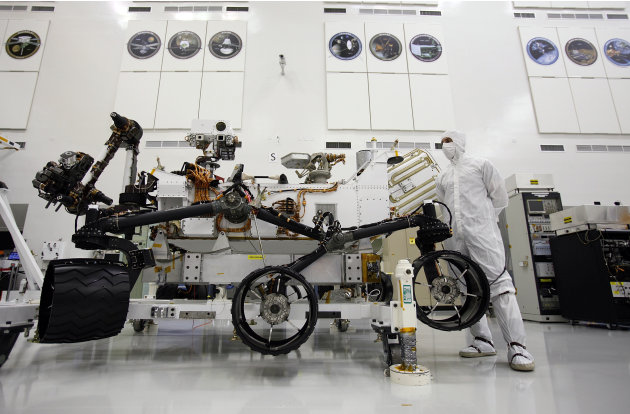NASA's Curiosity, packed with sophisticated
instruments, touched down on Mars on a quest for signs of whether the
planet has evidence of past and present habitable environments. Moments
after landing, Curiosity beamed back its first three images from the
Martian surface, one of them showing a wheel of the vehicle and the
rover's shadow cast on the rocky terrain. The craft's descent through
Mars' thin atmosphere, a feat called the most elaborate and risky
achievement in the annals of robotic spaceflight, turned out to be
short-lived cliffhanger, much to NASA's relief. Here are a few things to
know about Curiosity:
1.The purpose of the $2.5 billion
mission is to look for evidence that Mars - the planet most similar to
Earth - may have once harbored the basic building blocks necessary for
microbial life to evolve. It represents NASA's first astrobiology
mission since the 1970s-era Viking probes.
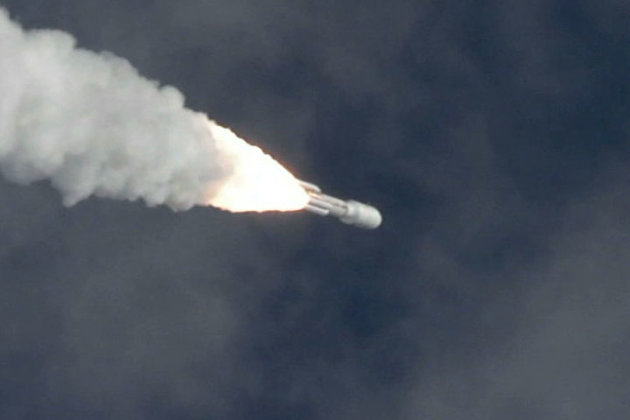
2.It
has been equipped with 10 scientific instruments, including two for
ingesting and analysing samples of powdered rock delivered by the
rover's robotic arm.
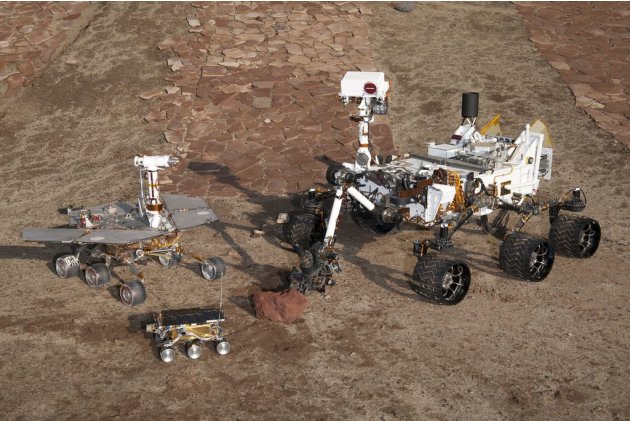
3.The robotic lab sailed through
space for more than eight months, covering 352 million miles (566
million km), before piercing Mars' atmosphere at 13,000 miles(20,921 km)
per hour -- 17 times the speed of sound -- before starting its descent.
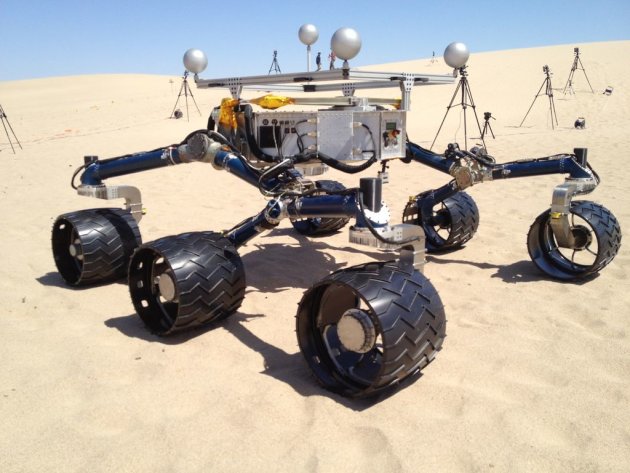
4.The
$2.5 billion Mars Science Laboratory, the formal name of the mission
deploying the Curiosity rover, was launched from Cape Canaveral in
Florida, Nov 26, 2011.
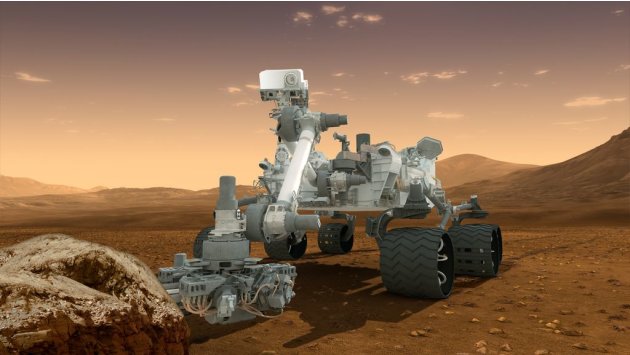
5.Curiosity
will spend two years exploring Gale Crater and an unusual three-mile (5
km)-high mountain consisting of what appears to be sediments rising
from the crater's floor.

6.The
craft's descent through Mars' thin atmosphere, a feat called the most
elaborate and risky achievement in the annals of robotic spaceflight,
turned out to be short-lived cliffhanger, much to NASA's relief.
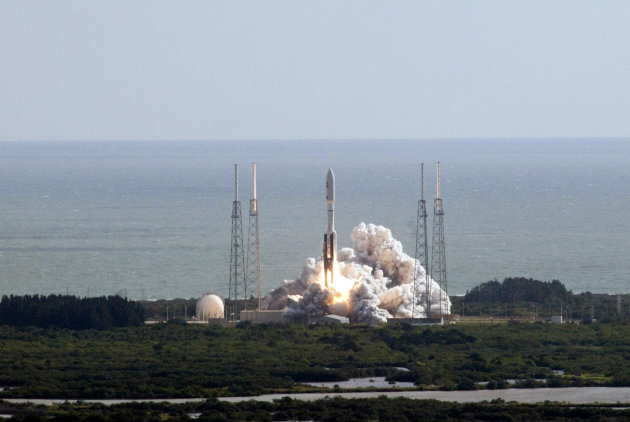
7.Curiosity,
encased in a protective capsule-like shell, utilized a first-of-its
kind automated flight entry system to sharply reduce its speed before
landing. Then it rode a giant supersonic parachute, a jet-powered
backpack and a never-before-used "sky crane" to touch down inside a vast
impact basin called Gale Crater, located near the planet's equator in
its southern hemisphere.
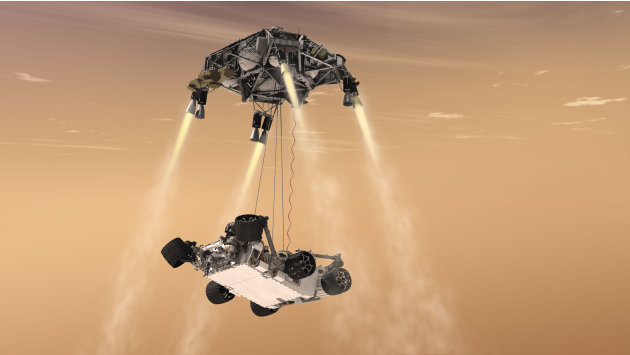
8.The rover comes equipped with an
array of sophisticated instruments capable of analyzing samples of
soil, rocks and atmosphere on the spot and beaming results back to
Earth. One is a laser gun that can zap a rock from 23 feet (7 meters)
away to create a spark whose spectral image is analyzed by a special
telescope to discern the mineral's chemical composition.
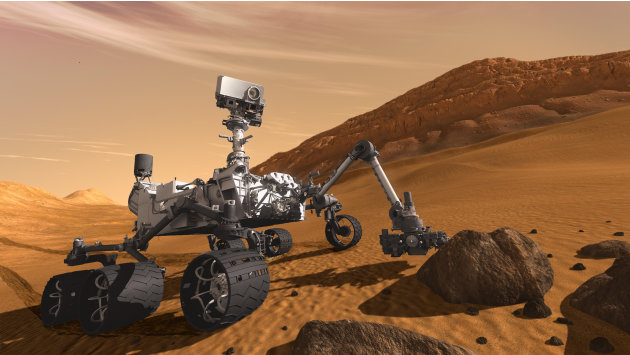
9.Weighing in at about a ton,
Curiosity is too big for the landing bags and thruster rockets that were
designed to let previous probes to Mars touch down gently down on its
surface. Instead, engineers designed a complicated landing system that
navigates through the thin but unpredictable atmosphere, deploys a
massive parachute at supersonic speeds and fires up a rocket-powered
descent platform. The platform holds an aerial crane to lower the rover
on a tether to the surface of Gale Crater and fly away.
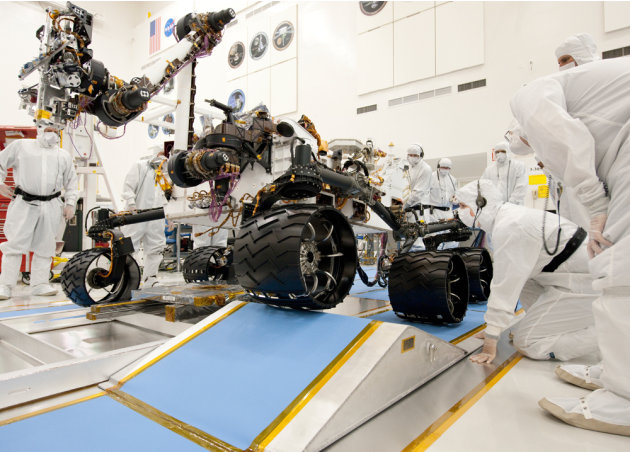
10.The landing marks a major
milestone for a US space agency beset by budget cuts and the recent loss
of its 30-year-old space shuttle program. he last time NASA sent a
rover to Mars, it sent two - Spirit and Opportunity, which were
dispatched to opposite sides of the planet to hunt for signs of past
water. Both outlived their three-month design lives by years. Spirit
succumbed to the harsh environment in 2010. Opportunity continues to
operate.
